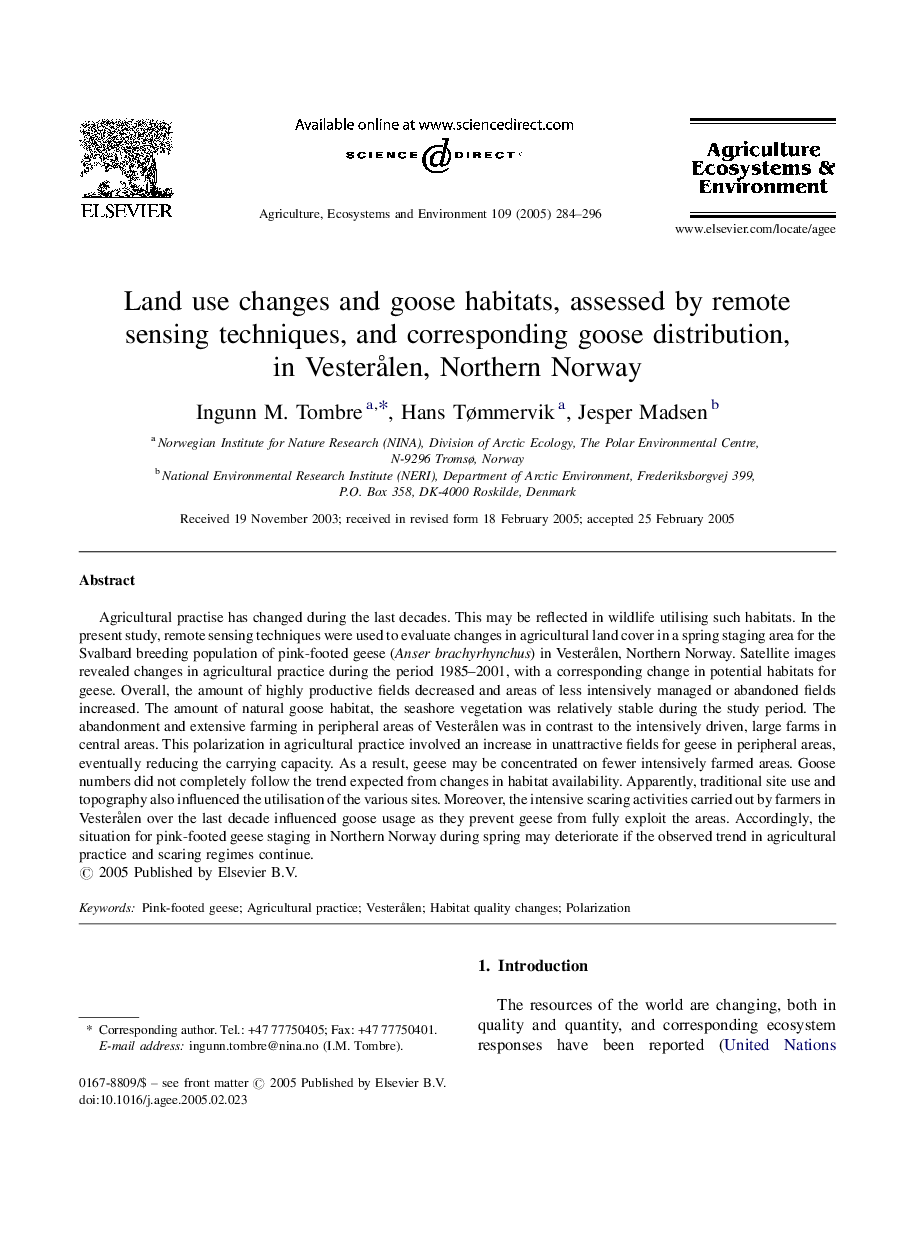| Article ID | Journal | Published Year | Pages | File Type |
|---|---|---|---|---|
| 8970758 | Agriculture, Ecosystems & Environment | 2005 | 13 Pages |
Abstract
Agricultural practise has changed during the last decades. This may be reflected in wildlife utilising such habitats. In the present study, remote sensing techniques were used to evaluate changes in agricultural land cover in a spring staging area for the Svalbard breeding population of pink-footed geese (Anser brachyrhynchus) in Vesterålen, Northern Norway. Satellite images revealed changes in agricultural practice during the period 1985-2001, with a corresponding change in potential habitats for geese. Overall, the amount of highly productive fields decreased and areas of less intensively managed or abandoned fields increased. The amount of natural goose habitat, the seashore vegetation was relatively stable during the study period. The abandonment and extensive farming in peripheral areas of Vesterålen was in contrast to the intensively driven, large farms in central areas. This polarization in agricultural practice involved an increase in unattractive fields for geese in peripheral areas, eventually reducing the carrying capacity. As a result, geese may be concentrated on fewer intensively farmed areas. Goose numbers did not completely follow the trend expected from changes in habitat availability. Apparently, traditional site use and topography also influenced the utilisation of the various sites. Moreover, the intensive scaring activities carried out by farmers in Vesterålen over the last decade influenced goose usage as they prevent geese from fully exploit the areas. Accordingly, the situation for pink-footed geese staging in Northern Norway during spring may deteriorate if the observed trend in agricultural practice and scaring regimes continue.
Keywords
Related Topics
Life Sciences
Agricultural and Biological Sciences
Agronomy and Crop Science
Authors
Ingunn M. Tombre, Hans Tømmervik, Jesper Madsen,
